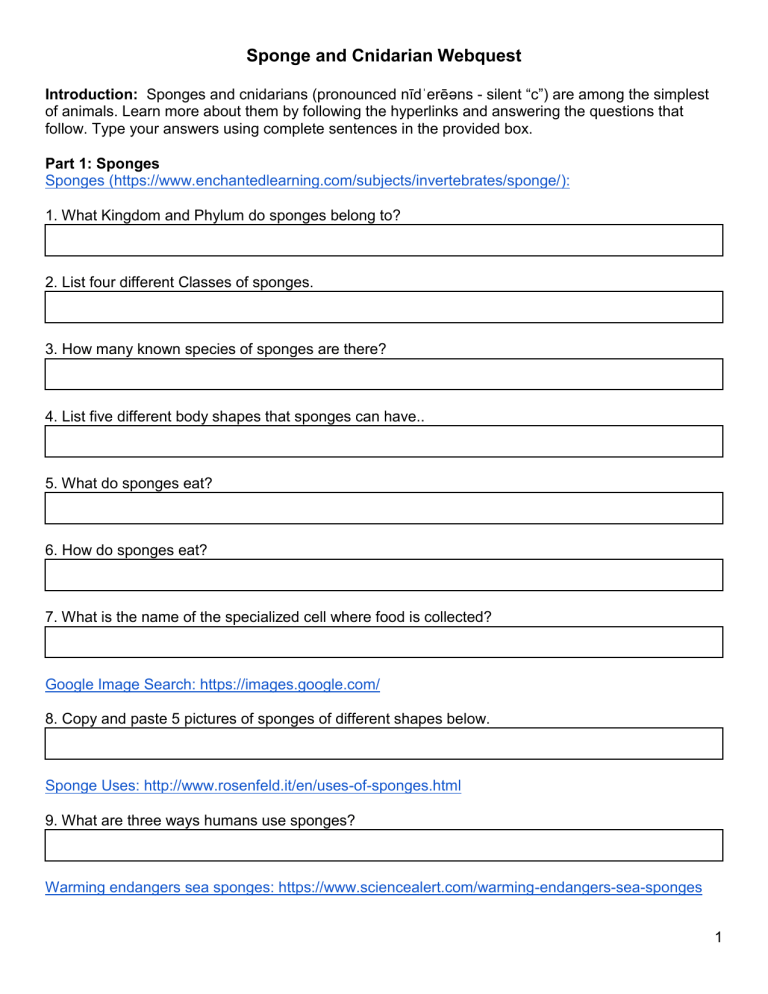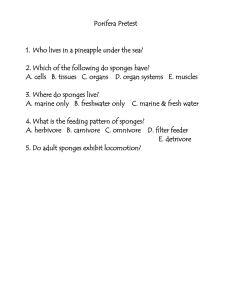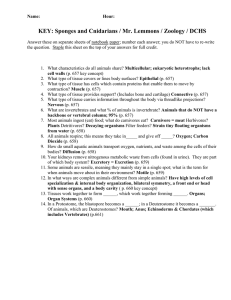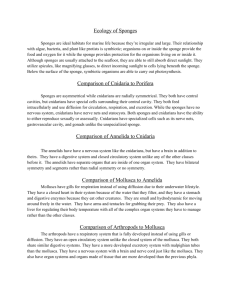Sponge and Cnidarian Webquest
advertisement

Sponge and Cnidarian Webquest Introduction: Sponges and cnidarians (pronounced nīdˈerēəns - silent “c”) are among the simplest of animals. Learn more about them by following the hyperlinks and answering the questions that follow. Type your answers using complete sentences in the provided box. Part 1: Sponges Sponges (https://www.enchantedlearning.com/subjects/invertebrates/sponge/): 1. What Kingdom and Phylum do sponges belong to? 2. List four different Classes of sponges. 3. How many known species of sponges are there? 4. List five different body shapes that sponges can have.. 5. What do sponges eat? 6. How do sponges eat? 7. What is the name of the specialized cell where food is collected? Google Image Search: https://images.google.com/ 8. Copy and paste 5 pictures of sponges of different shapes below. Sponge Uses: http://www.rosenfeld.it/en/uses-of-sponges.html 9. What are three ways humans use sponges? Warming endangers sea sponges: https://www.sciencealert.com/warming-endangers-sea-sponges 1 10. Why is warming water a threat to sea sponges? Part 2: Cnidarians Cnidarians: http://www.ucmp.berkeley.edu/cnidaria/cnidaria.html 11. Where does the word Cnidarian come from and what does it mean? 12. Name the four major groups (classes) of Cnidarians, list an example, and find a picture of each (use Google Image Search). Name Example Picture 1. 2. 3. 4. Simple animals with a sting!: http://www.oceanicresearch.org/education/wonders/cnidarian.html 13. Why are Cnidarians considered simple but deadly? 14. List the two different body types of Cnidarians and provide a picture an example of each. 15. What is the coiled thread-like stinger that all Cnidarians have called? 16. Describe how the stinger protects the animal. 17. Are Cnidarians deadly to humans? Why or why not? Coral Reefs: https://www.enchantedlearning.com/biomes/coralreef/coralreef.shtml 18. What is a coral reef? 19. What are the two types of coral? List an example of each. 2 20. How are coral reefs in danger? 21. In three complete sentences, describe some similarities and differences in sponges and cnidarians (at least one of each and three total). 3



